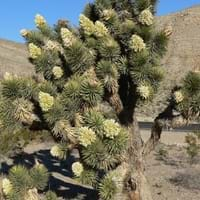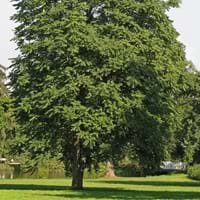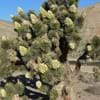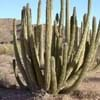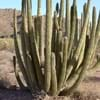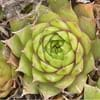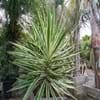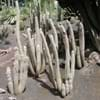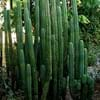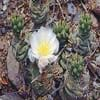What is
Life Span
Perennial
Perennial
Type
Cactus or Succulent, Tree
Tree
Origin
Southwestern United States, Mexico
China
Types
Not Available
Not Available
Habitat
Desert, Dry areas, Rocky areas, Sandy areas
Fields, Forest edges, Grassland, Roadsides
USDA Hardiness Zone
6-10
4-8
AHS Heat Zone
12-7
8-1
Sunset Zone
9, 10, 11, 12, 13, 14, 15, 16, 18, 19, 20, 21, 22, 23
Not Available
Habit
Upright/Erect
Arching/Fountain-shaped
Information
Plant Size
Minimum Height
610.00 cm
99+
1,220.00 cm
33
Minimum Width
300.00 cm
99+
1,070.00 cm
19
Plant Color
Flower Color
White, Ivory
Yellow green, Light Green
Flower Color Modifier
Not Available
Bicolor
Fruit Color
Light Green
Pink, Light Green, Sienna
Leaf Color in Spring
Gray Green, Dark Green
Green
Leaf Color in Summer
Gray Green, Dark Green
Dark Green
Leaf Color in Fall
Gray Green, Dark Green
Dark Green
Leaf Color in Winter
Olive, Gray Green, Dark Green
Not Available
Shape
Leaf Shape
Linear
Heart-shaped
Thorns
Yes
No
Season
Plant Season
Spring, Summer, Fall, Winter
Spring, Summer
Growing Conditions
Sunlight
Full Sun
Full Sun, Partial Sun, Partial shade
Growth Rate
Very Slow
Fast
Type of Soil
Loam, Sand
Clay, Loam, Sand
The pH of Soil
Acidic, Neutral, Alkaline
Acidic, Neutral, Alkaline
Soil Drainage
Well drained
Average
Bloom Time
Early Spring, Spring, Late Winter
Spring, Late Spring, Early Summer, Summer
Repeat Bloomer
No
No
Tolerances
Drought
Pollution, Drought, Salt, Soil Compaction
Care
Where to Plant?
Ground
Ground
How to Plant?
Leaf Cutting, Stem Cutting
Seedlings
Plant Maintenance
Medium
Medium
Watering Plants
Watering Requirements
Allow soil to be completely dry in between waterings, Do not water frequently
Average Water Needs, Do Not over Water
In Summer
Lots of watering
Drought Tolerant, Average Water
In Spring
Moderate
Drought Tolerant, Average Water
In Winter
Average Water
Drought Tolerant, Average Water
Soil
Soil pH
Acidic, Neutral, Alkaline
Acidic, Neutral, Alkaline
Soil Type
Loam, Sand
Clay, Loam, Sand
Soil Drainage Capacity
Well drained
Average
Sun Exposure
Full Sun
Full Sun, Partial Sun, Partial shade
Pruning
Remove damaged leaves, Remove dead branches, Remove dead leaves
Prune in late summer or fall, Prune in late winter, Remove damaged leaves, Remove dead branches, Remove dead leaves
Fertilizers
All-Purpose Liquid Fertilizer, No fertilizers needed
All-Purpose Liquid Fertilizer
Pests and Diseases
Brown Spots, Red blotch
Red blotch, Spotted Lanterfly
Plant Tolerance
Drought, Dry Conditions, Dry soil, Heat Tolerance, Rocky Soil, Sun
Drought, Variety of soil types
Facts
Flowers
Showy
Insignificant
Flower Petal Number
Single
Single
Fruits
Showy Fruit
Yes
Yes
Edible Fruit
No
No
Fragrance
Fragrant Flower
Yes
Yes
Fragrant Fruit
No
Yes
Fragrant Leaf
No
Yes
Fragrant Bark/Stem
No
Yes
Showy Foliage
Yes
Yes
Showy Bark
No
Yes
Foliage Texture
Bold
Coarse
Foliage Sheen
Matte
Matte
Evergreen
No
No
Invasive
No
Yes
Self-Sowing
No
Yes
Attracts
Not Available
Birds
Allergy
Not Available
allergic reaction, Skin irritation
Benefits
Uses
Aesthetic Uses
Decorating walls
Beautification, Showy Purposes
Beauty Benefits
Not Available
Not Available
Edible Uses
No
Yes
Environmental Uses
Air purification
Air purification
Plant Benefits
Medicinal Uses
Not Available
Anthelmintic, Antispasmodic, Asthma, Astringent
Part of Plant Used
Not Available
Bark, Root
Other Uses
Not Available
Used as Ornamental plant, Used for its medicinal properties, Used for woodware
Used As Indoor Plant
No
No
Used As Outdoor Plant
Yes
Yes
Garden Design
Feature Plant, Rock Garden, Wall
Shade Trees, Street Trees
Scientific Name
Botanical Name
YUCCA brevifolia
AILANTHUS altissima
Common Name
yucca palm
tree yucca
palm tree yucca
Tree-of-Heaven
In Hindi
Joshua Tree
कल्पवृक्ष
In German
Joshua Tree
Baum des Himmels
In French
Joshua Tree
Arbre de paradis
In Spanish
Árbol de Joshua
Arbol del Cielo
In Greek
Joshua Tree
Δέντρο του Ουρανού
In Portuguese
Joshua Tree
Árvore do céu
In Polish
Joshua Tree
Drzewo Nieba
In Latin
Joshua ligno
Lignum de caelo
Classification
Kingdom
Plantae
Plantae
Phylum
Tracheophyta
Magnoliophyta
Class
Magnoliopsida
Magnoliopsida
Order
Asparagales
Sapindales
Family
Agavaceae
Simaroubaceae
Genus
Yucca
Ailanthus
Clade
Angiosperms, Monocots
Angiosperms, Eudicots, Rosids
Tribe
Not Available
Not Available
Subfamily
Not Available
Not Available
Number of Species
50
99+
Not Available
